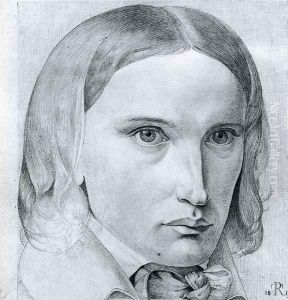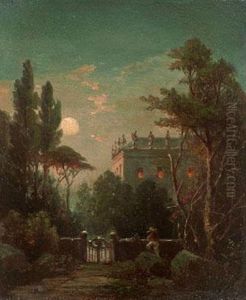Theodor Markus Rehbenitz Paintings
Theodor Markus Rehbenitz was a German artist known for his contributions to painting and printmaking during the 19th century. Born on November 11, 1791, in Lübeck, Germany, Rehbenitz showed an early interest in the arts. His initial education came from the local artist Friedrich Carl Gröger, who was a prominent portrait painter. Rehbenitz later moved to Dresden to further his artistic studies, and subsequently, he spent time in Munich, which was a significant center for the arts in Germany during that period.
His artistic journey led him to join the Lukasbund, a group of romantic painters that later evolved into the Nazarene movement. This group of artists sought to revive the spirituality and sincerity they found in medieval and early Renaissance art. They were known for their religious and historical paintings that emphasized simplicity and devotion. Theodor Rehbenitz's work is often characterized by the same qualities that the Nazarenes espoused.
Rehbenitz, however, did not limit himself to the styles and themes of the Nazarenes. He was also influenced by his travels to Italy, where he spent a substantial amount of time studying the masters of the Italian Renaissance and absorbing the Italian landscape and light, which would later influence his work. His art pieces often reflected his range and adaptability, from religious and historical subjects to landscapes and genre scenes.
Despite his affiliation with the Nazarenes and his artistic accomplishments, Theodor Markus Rehbenitz did not achieve the same level of fame as some of his contemporaries. Nonetheless, his work was appreciated by those who valued the Nazarene movement's ethos and the purity of his artistic vision. Rehbenitz continued to work and contribute to the German art scene until his death on December 21, 1861, in Munich. His works remain a testament to the 19th-century art movements that sought to counteract the effects of industrialization and the perceived loss of spiritual and aesthetic values.

